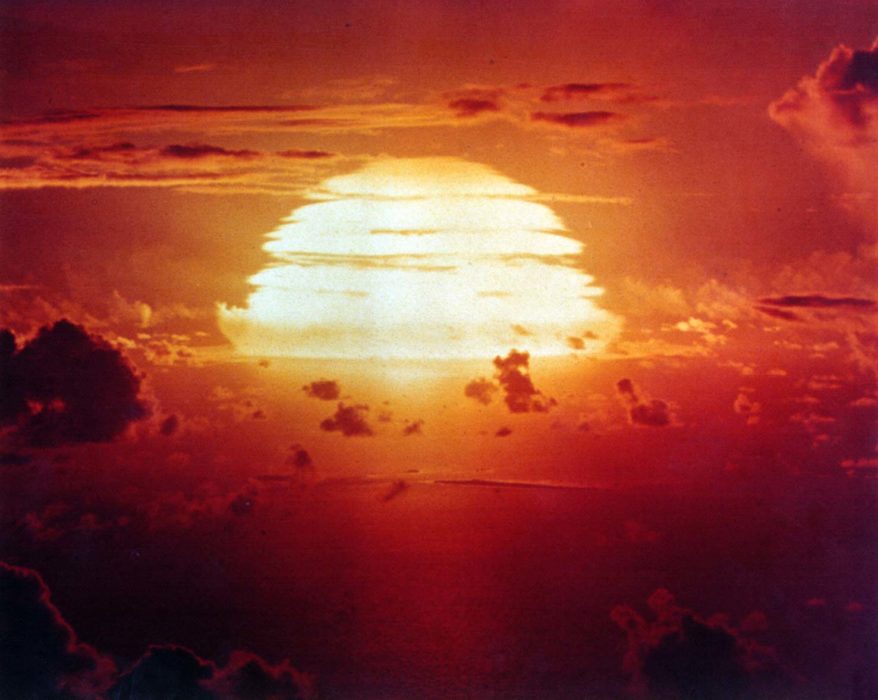11th November 2016 Vienna, Austria
How to ban nuclear tests

Just over 55 years ago, on 30 October 1961, the largest nuclear weapon ever constructed was set off over Novaya Zemlya island in the Arctic Sea.
The Soviet Tsar Bomba had a yield of 50 megatons, several thousand times as strong as the bomb dropped on Hiroshima. The mushroom cloud reached around 60 kilometers into the atmosphere.
Between 1945 and 1996 over 2000 nuclear tests were carried out worldwide – about one per week.
But since September 1996, only three countries have undertaken nuclear tests. In this century, only North Korea has done so, with tests in 2006, 2009, 2013 and 2016 (twice).
What happened?
The main difference is that the Comprehensive Nuclear Test Ban Treaty was opened for signature in September 1996.
The idea of banning nuclear tests was first suggested by the Indian Prime Minister Jawaharlal Nehru in 1954, after an atmospheric nuclear test had resulted in fallout affecting inhabited areas, and in particular a group of Japanese fishermen. But for years, scientists debated whether it was possible either to enforce a ban (e.g. by monitoring detonations) or whether, if a ban could enforced, it would possible for those states with nuclear weapons to maintain them safely without testing.
The rather brilliant thing about the Comprehensive Test Ban Treaty is that as well as discouraging testing, it also mandated the creation of the International Monitoring System, or IMS, to provide a global monitoring capability to detect nuclear explosions. The IMS can detect vibrations in the earth, sound in water, or radionuclide particulates and noble gases released by nuclear explosions.
The IMS is administered by the Comprehensive Test Ban Treaty Organisation (CTBTO), based right here in Vienna and to which I am accredited. It includes around 300 stations around the world. It is pretty good at making it impossible for states secretly to test weapons.
The difficulty which states have testing weapons because of the CTBTO helps to constrain the development of nuclear weapons and so reinforces the non-proliferation treaty (NPT). Data collected by the IMS is compiled by the CTBTO’s International Data Centre (IDC) and is accessible to all states which have signed the CTBT. The data also has other scientific applications, e.g. to make tsunami warning centres more effective.
So far, 166 countries have ratified the CTBT. This is not yet enough, however, for the treaty formally to enter into force. For that to happen, a further eight states (known as the “Annex 2 States”) need to ratify: China, Egypt, India, Iran, Israel, North Korea, Pakistan and the United States.
One might argue that the CTBT is not 100% effective because it has not yet entered into force. But there’s also a strong argument that the existence of the treaty, the International Monitoring System and the International Data Centre help deter the proliferation of nuclear weapons and are a big step forward.
The United Kingdom will continue to support the CTBT and its monitoring mechanisms. We will also continue to encourage further countries – particularly those listed in Annex II – to ratify the Treaty. Our goal: to ensure the CTBTO can continue to detect and deter, and to enable the CTBT to enter into force, thus further reducing the potential for the proliferation of nuclear weapons.
Thanks for the responses.
There is an interesting video about the role of the CTBTO’s Global Warning System during the 2011 Tsunami in Japan here: https://www.youtube.com/watch?v=A6t9Vn7-9eU
Indeed we cannot aim to eliminate nuclear weapons testing without proper detection and reporting. In a year when a new version of a cold war between nuclear powers is in the making, organisations like CTBTO are key.
Being a seismologist who spent many years researching in Sendai Japan (i.e. 2011 Tsunami) I particularly share the view of the positive impact that the work being done by CTBTO is having in the effort to reduce the potentially thousands of casualties in the next Pacific Ocean tsunami.
You have a very good point and I admire your idealism. But I am afraid that this is the thin end of the wedge. So we ban nuclear tests. Good. Then we ban some countries from having nuclear weapons or try to impose more sanctions, causing unnecessary tensions. Nuclear weapons are always a contentious issue needing to be addressed carefully.